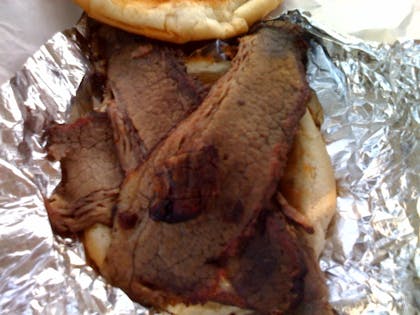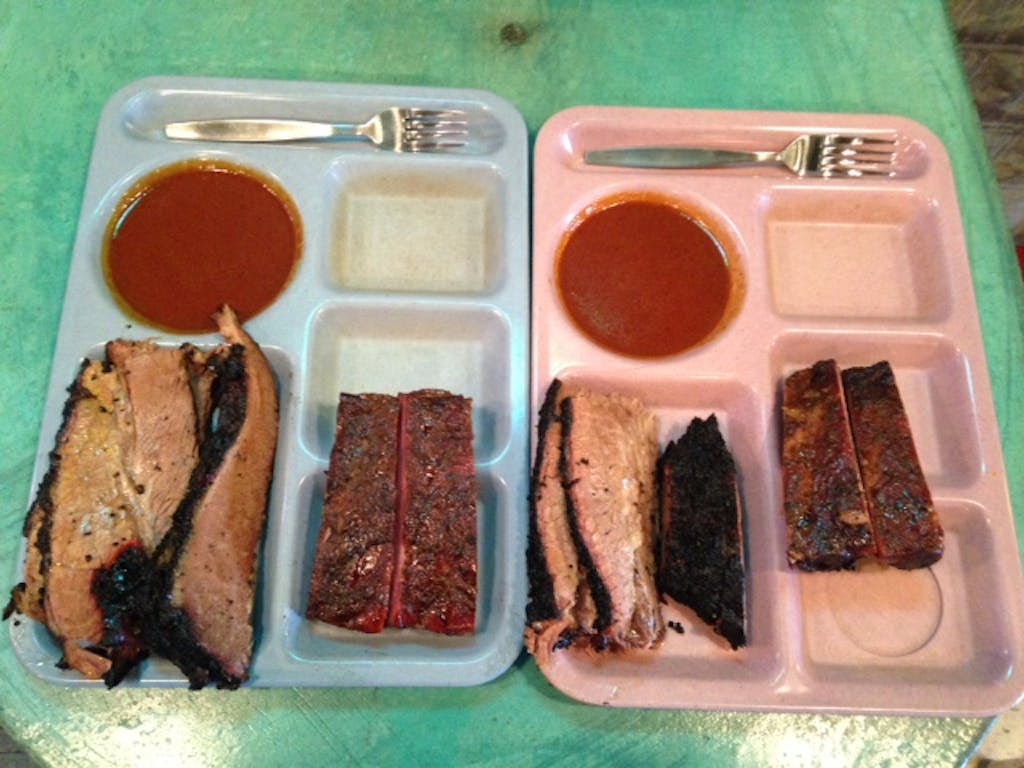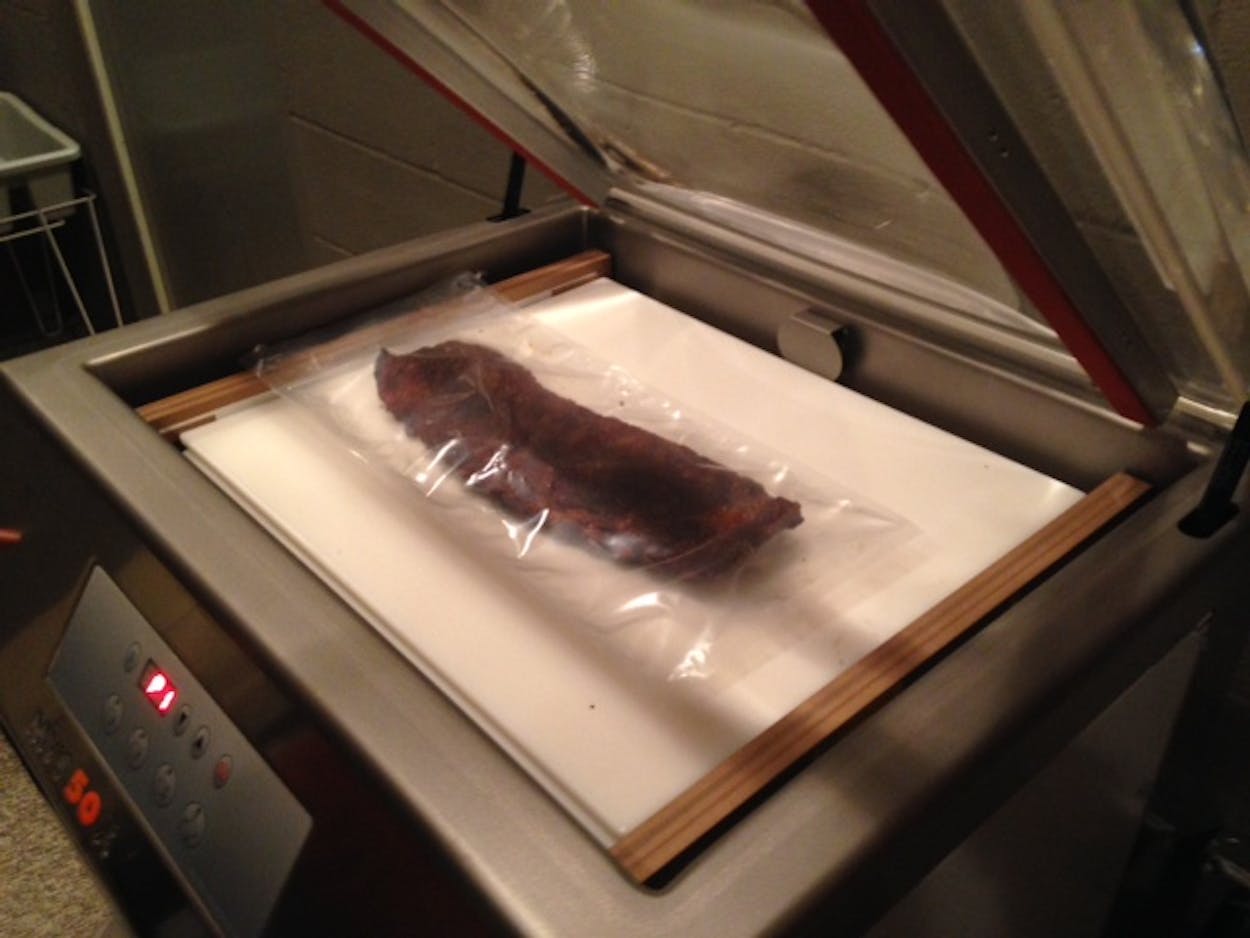The barbecue you eat can’t always be fresh. Maybe grandma sent you a brisket in a care package. Sometimes you might even have some leftover ribs. So, what is the best method to reheat it? While eating around the state I know that even in the hands of a microwave maestro, brisket is never going to be great if you hear a DING coming from the kitchen. Throw a fully smoked rack of ribs straight from the fridge into the oven and you’ll get dried out pork with a warmed over flavor. A sturdy wrap of foil can help hold in the moisture, but the result is still flawed. I wanted to know if there was a way to bring barbecue back to life in a way that equaled, or at least came very close to the quality of what comes right off the pit.

The primary enemy is moisture loss. Once brisket is sliced, it begins a rapid decline towards inedibility almost immediately. Leave those slices laying around for a while and they’ll begin to petrify. The key for leftovers is to get them wrapped up as airtight as you can as soon as you can. Don’t store them in the Styrofoam container you brought them home in because it’s drafty in there, and the less air movement on the meat’s surface, the better. When you’re hungry again around midnight, there are a couple easy tricks to revive your meat.
Put some life back into a slice of cold brisket rapidly by steaming it. You can use a veggie steamer basket, or make a hybrid double boiler with a metal strainer sitting atop a pot of boiling water. The rising steam will provide both moisture and heat to warm the meat quickly. Another option (assuming you don’t have a cryovac machine) is to place a tightly sealed plastic bag ‘o meat into a vat of boiling water. Think of it as redneck sous vide. These methods aren’t perfect, but they’ll work in a pinch. While they might be fine for home use, but if you really want to get serious, like a barbecue joint who wants to ship smoked meat, you’ll need that cryovac machine for great results. Here’s why.
Cooking meat is essentially a process of denaturing proteins. As those proteins denature, their ability to hold onto water decreases. That’s why a whole raw brisket loses about ten to fifteen percent of its water during cooking. The remaining water is precious moisture. Along with the melted collagen and fat, it gives a good slice of fresh brisket that visual sheen and juiciness on the tongue. If a fully cooked brisket is chilled then reheated, those proteins will continue to denature, losing even more moisture. As Texas A&M meat science expert Jeff Savell explains, “The challenge is to continue cooking a product that’s already way overcooked.” The more quickly it is reheated, the worse it gets. Also, warming the meat with dry heat will lose even more water through evaporation. Things get even drier if you leave it uncovered. The solution for all of these problems can be solved by slowly warming meat protected by an air-tight barrier (like cryovac) and a water bath.

A small storefront in Richardson, Texas is home to Woody B’s BBQ. Woody has a big Oyler smoker and a stack of mesquite to fuel it, but you won’t find any barbecue plates on the menu. There is no chopping black, and there aren’t any tables. It’s to-go only, and the only way to buy the barbecue here is pre-sliced and pre-portioned in air-tight baggies. The instructions are simply to place the bags directly into a pot of boiling water. In a few minutes, they’re ready to eat. That first bite came along with a hefty dose of skepticism, but the result was hard to argue with. It wasn’t the best barbecue I’d ever eaten, but it was the best reheated brisket I’d ever tasted up to that point.
I’ve had a couple great briskets in the past that used a similar method of reheating, but they were kept whole for even better results. I was in a pinch on the way to Lake Texoma for a Fourth of July weekend, and my father-in-law put me in charge of the brisket for the big family meal. I hadn’t planned ahead, so I called Clark’s Outpost in Tioga to secure a whole brisket. They handed me a fully-sheathed hunk of beef. At the lake house I placed it in a deep pan of water, and put the whole package into a 225 degree oven for a couple hours. It came out beautifully, and all that luscious, tender fat that Clark’s usually trims off was there for the eating. Another instance was at an event where Wayne Mueller was supposed to be cooking briskets. A family emergency kept him away, so he shipped several cryovaced briskets. Another pit master at the event warmed them up and sliced them. While I knew the situation before I took the first bite, it was some mighty fine smoked brisket.
A rack of ribs in The Slow Bone cryovac machine
That brisket from Wayne Mueller is part of the reason why Jack Perkins at The Slow Bone in Dallas bought a cryovac machine for the restaurant. That brisket was served at an event in his parking lot, so he was there to taste it first-hand. Eventually, Jack wants to add an option for folks outside of Texas to get his barbecue in the mail. He’d like to make sure they get a great product on the other end. It was time for a blind taste test, and I was up for the challenge.
Two trays were brought to my table, both containing brisket slices and two ribs. One sample of each was fresh, and the other had been cryovaced, chilled for two days, then reheated in a water bath. I had only my taste to go on. I’m not ashamed to say that both briskets tasted identical. One was more tender, so I assumed it had been heated twice. I chose wrong. I should have waited a bit longer before locking in my vote, because the reheated brisket revealed itself eventually. After about fifteen minutes, the reheated sample had formed a hardened, dry coat on the cut faces of brisket, while the brisket smoked that day was just barely showing signs of moisture loss. Those twice-denatured proteins had revealed themselves, but it was too late for me to save face. At least I chose the warmed up ribs correctly, but those took less guesswork.

Lipid oxidation is the process of animal fats (lipids) slowly becoming rancid from exposure to oxygen. It’s like rust on a car that keeps getting worse with age. When discussing cooked meat, flavor is the first thing to be affected by it. Keeping meat cold and tightly sealed both help inhibit the oxidation process, but it never fully stops, even when meat is frozen. This oxidation affects unsaturated fats more readily. Pork being higher in unsaturated fat than beef means it turns rancid more quickly. In the taste test at The Slow Bone, the flavor difference between the fresh and the two-day old pork was obvious. The older sample had developed WOF or warmed-over-flavor (that is an actual scientific term) through just two day’s worth of lipid oxidation, despite being fully wrapped in cryovac.
Wood smoke and salt both have antioxidant properties when applied to meat. That means they help fight off that pesky lipid oxidation for a while longer. While neither smoke nor salt was enough to fully protect the pork, it goes a long way toward explaining why a salty, smoked brisket showed no signs of WOF after two days in the fridge. If you want to eliminate WOF entirely, you can always cure the meat with nitrites, which eliminate the off flavors entirely. Because if this, cured meats like ham, bacon, and pastrami are permanently safe from WOF.
The lesson here is that reheated barbecue need not be terrible. Using a little ingenuity, you can enjoy some pretty good quality leftovers, especially smoked beef. You can also be confident that the brisket you send to Uncle Milt in Minneapolis can taste almost as good as it would in Texas as long as it arrives in cryovac and he knows how to handle an oven.
- More About:
- Brisket








